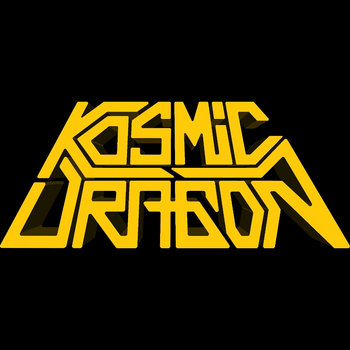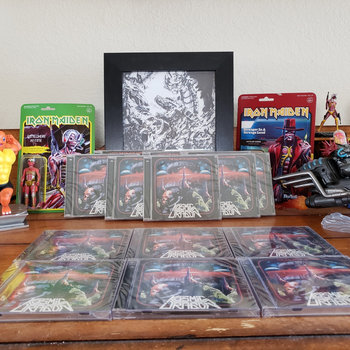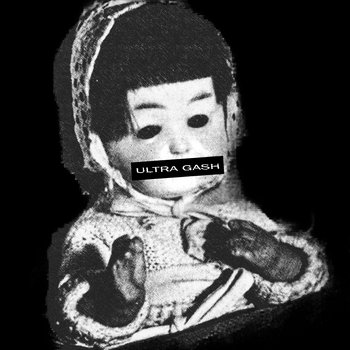
As much fun as it is to explore the staggering amount of music that’s out there in the world, we all come back to music that seems familiar and comfortable to us. That’s, of course, normal and fine. Musical exploration is one of my favorite things, but no matter how far you roam, you’ve got to have a base camp. That base, for me, is stuff that falls under the general umbrella of what I call “yelling music.” I’m almost always in the mood for listening to people yell. So that’s where we’re starting this time around—more yelling.
Civil Evacuation
Don’t Support Their War


You know basically what you’re getting into by looking at the cover here. The aesthetic style of anarcho-punk is firmly established. Anyone can drop some stencil font over a black and white photograph, but Civil Evacuation delivers the goods in more ways than graphic design. This is full-throttle D-beat hardcore, the way it should be: galloping drums, lightspeed guitars, thundering bass, and throat-shredding vocals. A couple of the songs here break the three-minute mark, making them practically epics in this genre, but Civil Evacuation keeps it interesting enough to warrant those monumental lengths. There’s a part in “Psychosis” where the band drops into a half-time breakdown just before kicking back into full speed behind a wailing guitar solo that is absolutely perfect. I also love it when a band has a “title song,” which this album contains (“Civil Evacuation,” obviously).
Of course there’s been some evolution in #crust punk since its beginnings nearly 50 (!) years ago but the general principles of the genre are still rock solid: fast, abrasive music and politically charged semi-intelligible lyrics.
Inqirad
إنقراض – Demo


Dave Davies of The Kinks famously slit the speaker cones of his amplifier with a razor blade, resulting in the distorted guitar tone on “You Really Got Me.” The bass guitar that kicks off “لما كنا صغار – When We Were Young,” the opening track on this demo, is similarly distorted, but it’s no stretch of the imagination to believe the amp was damaged through the sheer force of Inqirad’s aggression. These four hardcore songs are brutal, filled with buzzing guitars and frantic drumming. The lyrics, shouted in Arabic, deal with personal and political issues in a direct manner. Standout track “نحن المنقرضين – We Are The Extinct” (Inqirad, or ”إنقراض,” is an Arabic word that translates to “extinction”) expresses frustration with religion with grinding riffs and breakneck drumming. This demo is a powerful statement, and one that has me excited to hear more.
Inqirad are from #Riverside, California, a city which gave the world baseball great Barry Bonds, chess grandmaster Larry Christiansen (yes, I used Wikipedia for help on that one), and now offers excellent intergalactic science fiction-themed power metal.
Kosmic Dragon
The Galactic Hammer




Compact Disc (CD)


In Jack Vance’s Dying Earth novels, we learn of a far distant future where a new human civilization has emerged on Earth in the dying days of our sun. In these books, the technology of our future is so far in the past that it has receded into legend. Kosmic Dragon (the band) are telling their own stories of a faraway future through tales of the voyages of the Kosmic Dragon, a ship traveling the stars in search of ancient tales of past civilizations; legends like those in Vance’s novels rooted in a distant and unknowable past. It’s a solid concept with infinite potential and it’s backed up here with expertly performed power metal. Along with the solid riffs, galloping drums, and soaring vocals, Kosmic Dragon know their way around a synthesizer. It’s not the focus of these songs, but it’s perfectly used to provide the needed atmosphere and effects to the tales they’re telling. If you like high-concept, hard-driving power metal in the vein of Condition Red-era Iron Savior, The Galactic Hammer has exactly what you’re looking for.
It shouldn’t be a surprise, given the subject matter dealt with by our last artist, to see the #cosmic tag at the bottom of the page. The artists united under that banner are as vast and varied as, well, the cosmos. We’re jumping now from energetic power metal to some more subdued synthesizer sounds.
MOON BSTRD
MOON BSTRD


Starting out slowly, with a rising synth swell and a mid-paced beat, “Take Off,” the first track on MOON BSTRD is full of anticipation, as if that beat might kick off into EDM or industrial territory at any time. Instead, it settles into a comfortable 60 BPM groove and stays there, providing a skeleton for incredibly pleasant synth experimentation. Drones rise and fall out of this 10-minute long piece like cicadas calling out to each other in the summer heat. This relaxed mood continues for the remainder of the hour-long album. “Machine Lovers” almost veers into industrial music, with its fuzzed-out drum machine and buzzing voices, but it never develops that genre’s requisite harshness. These electronic explorations are warm, welcoming the listener in, presenting eclectic musical ideas in a relaxed setting.
Frankly, I’m not sure how the #folk tag got here, but I’m glad we were offered this road to travel. It wound up taking us to an artist who also isn’t a folk artist but who is on a label that releases folk music—an artist who my mother absolutely adored in the ‘80s. I can still remember listening to his music on the radio in the back seat of my mom’s car on the way home from my grandmother’s house.
Razzy Bailey
Sparks


This is a collection of what appears to be early material (mostly from the mid-to-late-‘70s) from this ‘80s country superstar. The Razzy Bailey on these recordings is a little rougher around the edges than the one that rose to fame with “Midnight Hauler” and “Loving Up A Storm.” Still, anyone familiar with those hits will immediately recognize the sound on these tracks. Of particular interest here is a version of “I Hate Hate” which lacks the punchy bassline of the version Bailey released as a single. The version here also makes even clearer the debt this song owed to Archie Bell’s “Tighten Up.” Sparks is a fascinating glimpse of the kind of material Bailey would have been playing on the honky tonk circuit in Georgia and Alabama before hitting it big with a string of number one singles in 1980 and 1981.
Obviously, Razzy Bailey’s music is going to have the #country tag at the bottom of the page, and obviously (or, at least it should be by now), we’re going to use it to jump to an artist who definitely isn’t making country music. As I said before, I don’t know why this path is here, but I’m definitely glad we took it…
Blond Sa and Deep’Soul
Dancing in California


If someone played this record for me and told me it was a release from early ‘90s Warp Records, I would have no trouble believing them (I realize this is the second installment of the Navigator to mention this label, but it’s a musical touchstone that looms large in my preferences in electronic music, so it probably won’t be the last time). This relaxed, multi-layered record is a masterful synthesis of the influence of the IDM masterpieces of artists like Autechre and B12 with the sound of amapiano, a South African house music subgenre. Standouts here include “Nakufela,” a slithering, expansive track using heavily processed vocals to create an atmosphere that is simultaneously serene and sinister. Later, “Bosso” picks up the tempo a bit, delivering a more classic house music experience, shaking the listener out of a blissed-out trance with bright percussion and rhythmic vocals.
#Amapiano is a southern African (mostly South African, but the influence has spread to neighboring countries and beyond) form of dance music that typically showcases piano-based melody combined with elements of hip-hop and Kwaito, another South African electronic genre that often uses loops of traditional southern African percussion to create its beats. It’s this traditional African sound that our next artist focuses on.
Diphala Tsa Batswana
Nkabe


This is an album of celebration and joy. Relentlessly upbeat, this collection of songs has a cheerful energy. Making careful use of selected samples (a crowd of cheering children, the sound of rushing water, chirping nighttime insects and calling birds), Nkabe has an open, expansive sound. The synth work on these songs is reminiscent of the late ‘80s work of South African pop group Imitshotshovu, but the difference here is in the vocals. Almost always using several singers at once, Diphala Tsa Batswana create intricate vocal patterns that weave in and out of the songs. “Baetsokotsa” starts with a vocalization that, for less than a second, sounds exactly like the opening shout of Madness’s “One Step Beyond.” Standout track “Setlhako Sa Moratuwa” is a perfect example of this, using solo, duet, and group vocal performances over a steady backbeat. The result, as with all tracks on this album, is pure happiness.
The #traditional music tag applied to Nkabe makes obvious sense. It also allows us to jump from southern Africa to Romania to see an interpretation of a different culture’s traditional sounds.
Balkan Taksim
Žali Zare
I’m not terribly familiar with Romanian folk music, but Balkan Taksim’s presentation of it is updated with synths, drum machines, and swirling psychedelic elements that modernize the music made by traditional stringed instruments like the saz and cobza. Perhaps the reference point that comes quickest to mind (“mind” here being the mind of a Western listener) is the early ‘90s work of Dead Can Dance. Balkan Taksim presents the same meditative, pensive atmosphere, but one rooted in a particular folk tradition. The chant-like vocals on album highlight “Lunca” twist in and out of a melody provided by strings over a rumbling bassline, as the song progresses, chimes, piercing synths, and growling distorted riffs push the composition to a higher level. Žali Zare is like nothing I’ve heard before, but it’s definitely something I’ll be revisiting again.
Balkan Taksim are based in #Bucharest, Romania’s capital city. Digging into the music that city has to offer brings us to our next stop in our travels.
Gunshee
Friends Through Here
This album is a machine consisting of several intricate moving parts working in unison, locking together, winding around each other, then moving apart only to come together again when the cycle repeats. Influences, as you may expect from a harder-edged progressive band, range from the crunch of classic hard rock, to the reckless abandon of metal, to the heavy-hitters of the golden age of ’70s European prog, to the playfulness and experimentation of early fIREHOSE. That last one’s key here, really, because the lyrics to a song off that band’s first album provide an excellent description of what Gunshee’s offering up: “Steel gear inside gear…smoothness engaging, releasing lapping and plunging.” There’s a live track here that shows this isn’t just a studio creation. These are capable and experienced musicians, bringing an energy and aptitude to the classic heavy prog template.
Gunshee’s style of #progressive music is what most people would recognize as that genre, especially when you shorten it to just the first four letters. The final artist on our journey this time around is also progressive, but don’t expect anything resembling tightly structured rock music.
Yutokaiomaru
A Dirge of Knives





Compact Disc (CD)



The main focus of this wildly experimental work is the near half-hour improvisational noise/sound collage title track. In the album’s notes there is a list of instruments used in this piece, a list that includes things you may think of as musical instruments (koto, shamisen, synthesizer) as well as some more interesting items (eggs, nails, scissors, watermelon). The album is inspired, we’re told, by the story of Sada Abe, a geisha convicted of murder in the mid-1930s. As you might expect, there’s much, much more to the case and the details are often mysterious and unsettling, which is the same feeling Yutokaiomaru creates with A Dirge of Knives. Listening to this album in headphones is highly recommended, as the sounds are manipulated to create space, coming in from one side, and leaving from the other, echoing around your head with no clear origin, and at times somehow sneaking up on you from behind. I don’t know how that last one’s even possible, but I swear it happens. After the sprawling, mind-bending title track, there are four shorter pieces, each one challenging and unconventional but more focused on a single sonic idea than the main event.
It’s with the shock to the system of A Dirge of Knives that we’ll part ways until our next journey. We’ve covered quite a bit of ground this time, but there’s still (and always) so much more out there to hear. In the meantime, I’ll be right here listening to my beloved yelling music.







